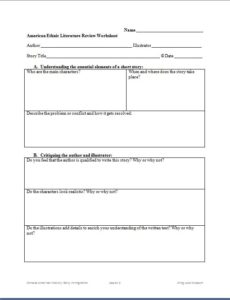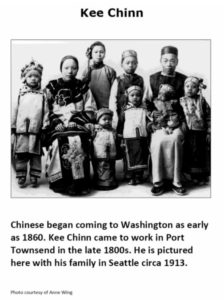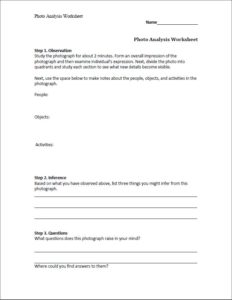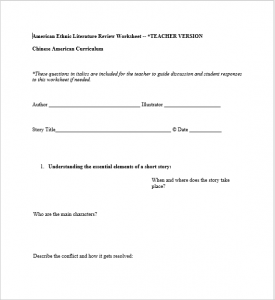Objective
Students will understand the participation and sacrifice of Chinese laborers in the building of the American infrastructure in the 1800s and early 1900s.
Materials Provided in Curriculum
Book: Tales from Gold Mountain by Paul Yee
1 Portrait Card of Kee Chinn with photo only
Same Portrait Card with text (PDF) Kee Chinn
Photo Analysis Worksheet
What Did We Read? What Did We Learn? Worksheet
Overview of book
Tales from Gold Mountain is a collection of stories about the early Chinese pioneers who built the Transcontinental Railroad in the mid-1800s, panned for gold, and settled the Wild West. Each of the stories deals with different issues. In “Spirits of the Railway,” the hazards that the Chinese faced while building the great railroads are exposed; in “Forbidden Fruit,” the issue of race is a central theme; in “The Revenge of the Iron Chink,” competition for jobs and the consequences of automation is brought up. Although the stories feature the experiences of Chinese on the West Coast, the themes are universal in nature. This book is available at the Seattle Central Library and can be requested for pick up at any other library branches. The book is also available through the King County Library system and can be requested for pick up from other library branches.
Teacher’s Note: Although this book has handsome illustrations, they have been criticized for depicting a stereotypical image of Chinese men and women where all the characters look the same. Activity #4 addresses this issue with the hopes that teachers and students can learn to better evaluate written as well as visual depictions of all groups of peoples.
Activity
Pass around the Portrait Card (with photo only) of Kee Chinn, who came to Washington in the late 1800s. Ask students to describe what they see or use the Photo Analysis Worksheet to gather student responses.
When students are done, ask them to consider the following photo caption or show them the Portrait Card that includes the photo and the caption that reads: “Chinese began coming to Washington as early as 1860. Kee Chinn came to work in Port Townsend in the late 1800s. He is pictured here with his family in Seattle circa 1913.”
Discuss how the students’ descriptions of the photo were similar or different from the caption, and why.
Have students define the word “pioneer.” Then introduce the book Tales of Gold Mountain and explain that you will be sharing some stories from this book about Chinese pioneers. Although the stories are fiction, they are based upon research and historic findings about the many Chinese who did back-breaking work to build this country.
Read Tales of Gold Mountain.
Follow Up Activity Options
After you have finished sharing some of the stories, you may wish to follow up with some of these activities:
- Read the letters included in this kit. Have the students pick out a character in one of the stories and write a similar letter.
- Have students discuss other stories they have heard about the Wild West and pioneers during this time period (roughly 1860s through 1882, when passage of the Chinese Exclusion Act stopped Chinese laborers from entering the United States). How are the stories different (i.e., who are they usually about)? How are the stories similar (i.e., characters are portrayed as courageous, adventurous, loyal, greedy, etc. and themes are about pioneers, overcoming challenges, succeeding in a new and often hostile environment)?
- “The Friends of Kwan Ming” deals with the value of friendship as well as the hazards of greed. Have students discuss human attributes that are important to them, such as friendship or respect, and develop a short story illustrating what the value means to them. Discuss how these themes are universal in nature and apply to all people regardless of race, ethnicity, religion, gender, etc.
- Have the class examine the illustrations in the book and compare them with the pictures of Chinese Americans faces in the book, Reflections of Seattle’s Chinese Americans: The First 100 Years.” Are the illustrations in the book accurate? What might someone reading the book think if they had not seen any of the other pictures or known any Chinese or Chinese Americans? Why might the artist have chosen to show the people in this way?* (*Some of the illustrations seem to be based on masks, or are stylized or caricatures and not meant to depict individual people.)
- Relate this discussion to any assumptions (if any) that students made about the Portrait Card of Kee Chinn and his family, and why students made these assumptions (i.e., the family is in China because they are wearing Chinese cloths; the family is foreign because they are not wearing American clothes, etc.). Also related this to the topic of “stereotyping,” (i.e., what a stereotype is and the effects of stereotypes whether they are intended to be positive or negative). Ask if students know of any stereotypes, positive or negative, that they have heard or seen. Think of books, TV shows or movies that portray stereotypical or one dimensional characters. Are these realistic accounts of people? What do these stereotypes make us think about real people?
- Go over the criteria for selecting quality books on Asian Americans (which can apply to all groups of people) with the class and do the extension activities, “Critiquing Mass Media” and “Critiquing Books” (that follows) to investigate how the public perceives and represents Chinese Americans, Asian Americans and/or other groups.
- Discuss that the stories in the book Tales from Gold Mountain are fiction. Then discuss why it may have been difficult to get first hand and nonfiction accounts of the work that the Chinese laborers did back in the mid 1800s (i.e., many laborers were illiterate in their first language, lack of knowledge of writing in English, lack of time if someone is a laborer and has to work, lack of reporters/authors who felt that a laborer’s job was worthy of writing about). Ask students to think about who records history, and what type of position would a person have to be in in order to have his/her writings published. Have them recall an historic event and how they learned about it. Who told the story? Could there be more than one perspective to an historic event?
- Read the book, Dragonwings by Laurence Yep, which is an historical fiction account of the early Chinese laborers who helped to build the Transcontinental Railroad in the 1800s. Use the novel guide available at www.classzones.com/novelguides/litcoms/dragonwings.
Extension Activity: Critiquing Mass Media
Have students watch TV, look in the papers, and check out movies for accurate portrayals of Chinese Americans, Asian immigrants or other Asian Pacific Americans. Discuss what they find. How does the media affect people’s ideas of what an American is? How has this unit on Chinese Americans and Chinese immigrants affected their answer to the question, “What is an American?”
Extension Activity: Critiquing Books
Have students look for other books on Chinese Americans in their library or on the Internet. Can they find them?
The Council on Interracial Books for Children issued criteria for analyzing books on Asian Americans in 1976 which are still valid today. They are excerpted below: (from Council for Interracial Books for Children Inc. 1976)
A children’s book about Asian Americans should:
- reflect the realities and way of life of an Asian American person;
- transcend stereotypes;
- seek to rectify historical distortions and omissions;
- avoid the “model minority” and “super” minority syndromes;
- reflect an awareness of the changing status of women in society;
- contain art and photos which accurately reflect the racial diversity of Asian Americans.
In critiquing ethnic literature, use the worksheet for students along with the annotated teacher worksheet that follows this lesson idea.
Teacher Information and Student Handouts :
- Kee Chinn Portrait Card (with photo caption)
- Photo Analysis Worksheet
- American Ethnic Literature Review Worksheet (for student)
- American Ethnic Literature Review Worksheet (Teacher Version)




